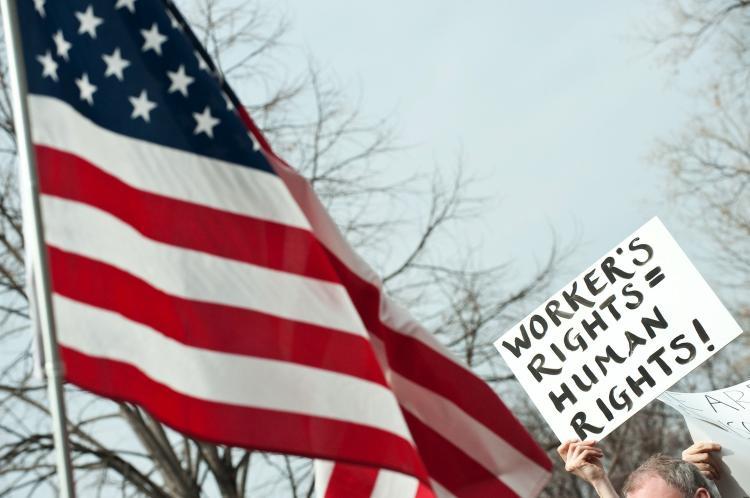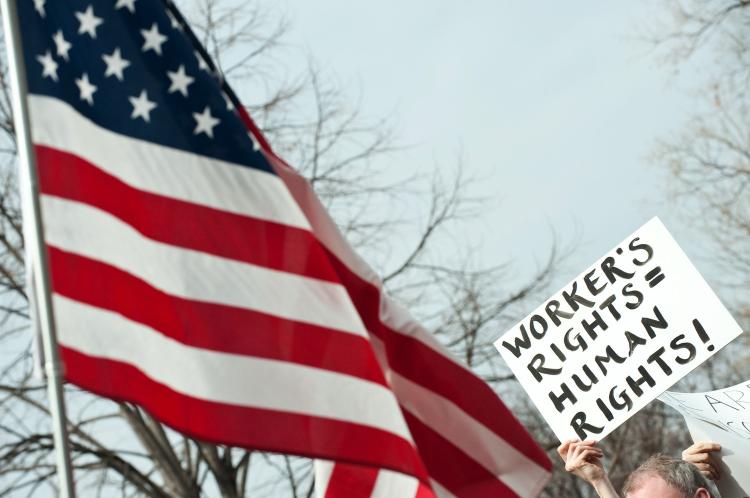Leveling the Paying Field on Worker Wages
The debate has been going on for decades, but the recessionary budget crunch has brought the issue to the fore as governments seek to cut expenses wherever possible.

WORKERS RIGHTS: A protester holds up a sign equating worker's rights with human rights during a rally in support of Wisconsin workers Feb. 26 in Washington. The debate over public vs. private worker wages and benefits is taking place around the nation. Nicholas Kamm/Getty Images
|Updated:
Reporting on the business of food, food tech, and Silicon Alley, I studied the Humanities as an undergraduate, and obtained a Master of Arts in business journalism from Columbia University. I love covering the people, and the passion, that animates innovation in America. Email me at andrea dot hayley at epochtimes.com
Author’s Selected Articles






